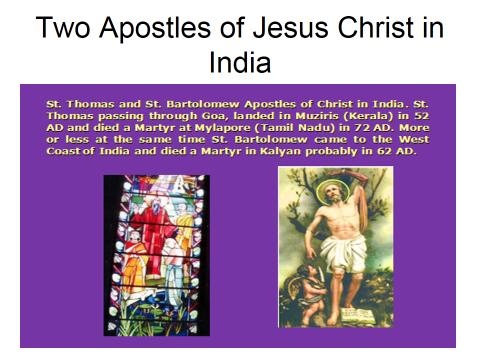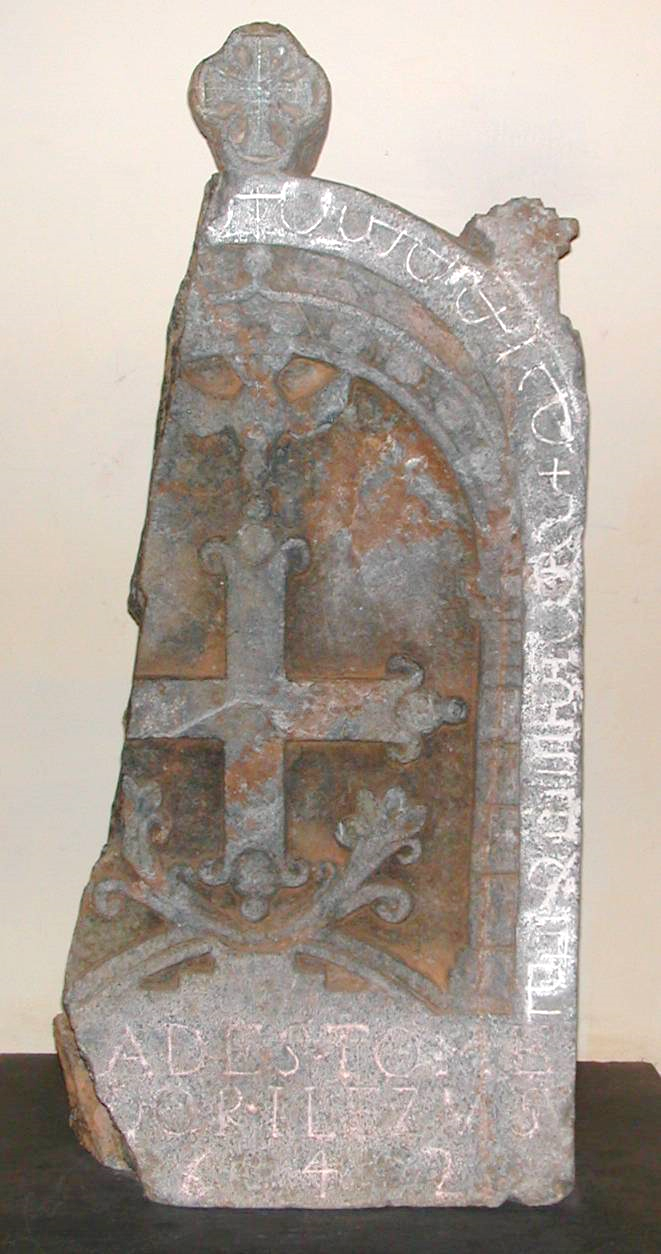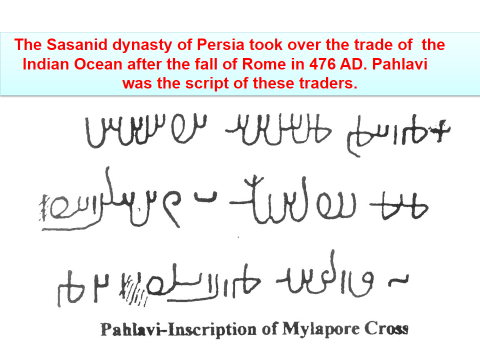- HISTORY
In the previous Chapter, mention has been made, in passing, of various dynasties and rulers, who held sway over some parts of Goa from the 3rd to the 7th centuries. However noted historians, Prof George Mark Moraes in his book Kadamba Kula and Dr P. B. Dessai in his History of Karnataka refer to the main Kadamba dynasty and its various later branches, the most famous of whom were the Kadambas of Goa. According to them, the main dynasty ruled from 325 to 540 AD; they had three capitals, one at Halsi, (in Belgaum district), the other at Banavasi (in North Kanara) and the third at Uchchangi (in Bellary district). From the records and find spots of their inscriptions, it can be surmised that roughly the area comprising Belgaum, Goa, North Kanara, Shimoga, Chitradurga and Bellary districts formed the main Kadamba kingdom at its zenith.
The original founder of the main Kadamba dynasty is said to have been Mayurasarma, who according to the Talagunda inscription was insulted by a Pallava guard while he was pursuing his Brahmanic studies at Kanchi. This led to discontinuance of studies and recourse to arms. Foiled in their attempts to subdue him, the Pallava rulers finally compromised, by ceding to him the territory from the Western Sea to Prehara, conjectured as the Malaprabha River near Belgaum.
One of these Kadamba rulers, Kakusthavarma I (405 to 430 AD), was a contemporary of the imperial Kumaragupta (415-455 AD) of the great Gupta dynasty of India. It is said that Kumaragupta’s son and successor Skandagupta was married to a Kadamba princess, Ajjhitabhattarika, daughter of the above mentioned Kakusthavarma I. After him the Kadamba kingdom came to be divided between his two sons, who ruled independently at Banavasi and Triparvata, until Kakusthavarma II (516 -540 AD) of the Triparvata line defeated Harivarma of the Banavasi line and brought the entire Kadamba kingdom under one rule. During the reign of his son Ajavarma, the Chalukiya Kirtivarma I was slowly rising to power. He ousted the Kadambas and established himself as an independent ruler in their territory.
- ARTEFACTS


It was during the rule of these dynasties that trade flourished through the Gopakapattana port. Fragments of red pottery from Gujarat and black pottery from North India, dating back to 4th to 6th centuries have been unearthed from the Pilar Tank, confirming the trade links.
3 SASANIAN – PAHALAVI CROSS
By chance, the author of this book, discovered a 7th century Pahalavi Cross at the extreme end of the old Gopakapattana port described above, on the banks of the River Zuari, close to the water front, at Dandi in Agasaim (Figure 9a).

Some people have the mistaken idea that Christianity was forced upon the local population of Goa by the Portuguese in 16th century and so is foreign to India. It is a fact that Christianity came to India long before it went to Europe1, in the very first century AD, within 30 years after the death of its founder, Jesus Christ, a Palestinian Jew, and hence Asian by birth. Christianity was introduced in South India by St Thomas and probably in Western India by St Bartholomew, both of them immediate disciples of Jesus Christ. According to Kerala historian Padmananda Menon2, St Thomas landed at Muziris in Kerala in 52 ADand died at Mylapore in Tamilnadu in 72 AD3.

Both St Thomas and Bartholomew (Figure 9 b), availed of Roman ships, frequenting the Indian ports. They took the route from Jerusalem – Persian Gulf – Arabian Sea to South India. Goa lies on this route and had the international Gopakapattana port, where at least one of them landed; so Goa had Christian settlements right from the first century, 1400 years before the Portuguese stepped in here in 1510 AD4.
The Western Roman Empire, as mentioned at the end of Chapter 2, had fallen in 476 AD. The Sasanid dynasty of Persia, which had been founded in 224 AD, took over the Indian Ocean trade from the Romans.
By conquering the coastline of Arabia, the Sasanids blocked the ships of the Eastern Roman Empire, that was ruled from Constantinople, and prevented them from entering the Indian Ocean waters; they founded or re-founded eight ports on the Bushite peninsula, on the Iranian coast and the Arab coast. They traded with the West Coast of India, Ceylon and Tamilnadu. .In their dealings, these Persian traders used the PAHALAVI script, an archaic form of modern Persian, which was in use up to the 7th century AD, i.e. till the Islamization of the Indian Ocean trade by the Arabs5. It is said that a painting in cave one of Ajanta represents a return embassy from Persia to the Chalukyan Court.6. There is also evidence of Goa’s trade with the Sasanids as indicated by silver coins of 6th century Emperor Khusrau II found in Chimbel, on the banks of the River Mandovi.
Though the Pahalavi merchants were Parsees, Christianity was fairly well diffused in Persia at that time, so that some of their merchants who traded with India were Christians. The Alexandrian geographer, Cosmas Indicopleustes, who made extensive voyages in the Arabian Sea around 520 to 522 AD, and visited Ceylon, the West Coast of India and the coasts of Arabia, has left a written account of his travels in Chapter 11 of his “Christian Topography”. He says that there are Christian settlements in Ceylon, Malabar, Mangaruth (Mangalore), Sibor (another name for Gopakapattana as will be shown in Chapter 4), Kalyan (Thana), Orrhota (Saurashtra), Sindhu (Indus) and in other places, with two Bishops sent from Rewardashir in Persia: one in Kalyan and the other in Malabar, where pepper and spices are grown.7 These Pahalavi Christians carved a special Cross today known as the “ ,St Thomas Cross”, bearing an inscription in Pahalavi language. Such Crosses were mounted at different places where there were Christian settlements in the 6th and 7th centuries.

Today ten of these Crosses are found: one in Anuradhapura (Ceylon / Sri Lanka); the other 9 in India: namely, one at Mylapore at St Thomas Mount in Tamilnadu (Figure 9 c) , where the Apostle died a martyr; seven in six places in Kerala, namely: two at Kottayam, and one each at Muttuchira, Kadamattam, Alangad, Kotamangalam, Kothanellur and Changanassery.

The ninth one is the Agasaim Cross (Figure 9 d) found in a snake infested dilapidating mound, and kept in the Pilar Seminary Museum8. It has the same Pahalavi inscription, as the Mylapore Cross. At the bottom of the Agasaim Cross are two lotus buds, the rainbow and three steps on each side representing Caivary. It symbolises the New Covenant made by God with man through the Death and Resurrection of Jesus Christ. It is a glorious Cross and so the Holy Spirit is shown hovering above it in the form of a dove.

An expert Pahalavi scholar, Dr. Joseph Vazhuthanapilly from Changanassery, Kerala, Director of the Centre for Indian Christian Archaeological Research (CICAR) and a member of the International Centre of Christian Archaeology (ISIAO), flew from Rome when he heard, in February 2002, about this find, read it, tried to decipher the inscription, then took a copy and confirmed it with other Pahalavi scholars and soon sent this interpretation :from Rome: “My Lord Christ have mercy on ……. (Destroyed part)…….. Son of the Syrian who has carved this.”
The Mylapore inscription is intact and has the same wording with name: “Gabriel, son of Charharbukt”, in our destroyed part. This interpretation originally was the work of P. Gignoux and Gerd Gropp9.

However, Dr Shilanand Hemraj, linguist and epigraphic-palaeographic researcher (Allahabad University), from Bangalore, has given a new interpretation to this Pahalavi inscription. He says that the above mentioned interpretation of Gignoux & Gropp is not very appealing, because the translation would be a prayer for the Author/ Inscriber and it would be quite inappropriate, in our Indian tradition, for someone to have his name inscribed in such big letters on an object of public veneration. As a corollary to his own Hindi translation of the Holy Gathas of Lord Zarathushtra (with Devanagari transliteration of the ancient Gathic original, written in Avesta-Pahalavi, together with its Vedic equivalent10; and on the basis of experience gained from his palaeographic-epigraphic research on the bilingual Aramaic and Greek inscriptions of Ashoka (undertaken for his Ph D, Allahabad, 2002), S. Hemraj has proposed an altogether new reading to our Pahalavi inscription on the St Thomas Crosses mentioned above, as follows:11:
“My Lord is the Messiah and Life-giver, Who be praised for ever because of salvation! Indeed, the Lord suffered crucifixion to redeem us”
The Portuguese were Latin Christians whereas those of Kerala were Syrian Christians. Holding that their brand of Christianity was the only true one, the Portuguese, forbade the earlier Christian doctrine and practice in 1559, that is, before the Inquisition began in Goa. D.F. Dantas in his book Gomant Kontha written in Konkani in 1897 has recorded this local tradition, that these Oriental Christians, were absorbed into the Latin rite12, and those who did not want to give up their old rite and their Indian names, dress and customs were persecuted and many of them, especially from Aldona, ran away and settled in Kalyanpur and Mangalore13. A Goan scholar, late Dr H. O Mascarenhas, refers to his grand-mother from Aldona, who had told him that as a young girl, she had seen (in the 19th century), a stone-carved equal-arms Cross without any image on it, on a hillock near her house. Also that the people were hiding such Crosses to avoid their destruction by the Portuguese soldiers who came looking out for ‘heretics’14

As can be seen from the Agasaim (Goa) Cross shown above, the Portuguese mischief-mongers removed the Pahalavi Cross from its mound in 1642 and made another inscription in Roman script at the base, warning that it is of St Thomas Christians. From 1599 to 1653, the Portuguese had clashed with the Syrian Christians in Kerala, trying to impose on them the Latin rite. These Christians resisted and finally took an oath to cut off their relations with the Portuguese. That is called the famous “KOONAM KHURIS OATH” after which the Portuguese were driven out from their possession in Cochin in 165315.

Therefore, in retaliation, the Portuguese broke this Agasaim Cross and dumped it inside the mound16, and mounted a big Latin Cross on it, which also broke into five pieces and fell down, around 1997, due to a cyclonic storm. The storm shook the mound and the Pahalavi Cross came out and was falling into the sea. Someone picked it up and kept it in front of the mound; and this has now become the most important item in the Pilar Seminary Museum.

Figure 9 (i) – 1972 Postage Stamp
Besides, in 1972, when the 19th centenary of the death of St Thomas was being celebrated, the Indian posts and telegraphs depicted the St Thomas Cross on a stamp. . The St Thomas Cross found in Agasaim is exactly similar to the one depicted on the postage stamp, shown alongside here. Hence Christianity in India is as old as Christianity itself and has existed in India for twenty centuries and cannot be called foreign to India.
1 The first President of India, Dr. Rajendra Prasad has affirmed this fact in 1950, “Remember St .Thomas came to India when many of the countries of Europe had not yet become Christian, and so those Indians who trace their Christianity to him have a longer history and a higher ancestry than the Christians of many of the European countries” Cfr. C.J.Costa, Apostolic Christianity in Goa and the West Coast, Pilar Publications, 2009, p 2; Also Pandit Jawaharlal Nehru has said the same in his autobiography, “Few people realize that Christianity came to India as early as the first century after Christ long before Europe turned to it, and established a firm hold in South India. Although these Christians have their head elsewhere, Christianity is practically indigenous and has few outside contacts… There were a number of Christians in South India and they were as much part of the country as any one else…” – see ibidem p 95-96.
2 Menon Padmananda K., History of Kerala, 2 vols., Ernakulam: 1924-29
3 Dr.H.O.Mascarenhas, article on the Examiner, a weekly organ of the Archdiocese of Bombay, issue dated 14-3-1953 p 133; A.C. Perumalil op cit pp 76-77
4 C. J. Costa, Apostolic Christianity in Goa and the West Coast, Pilar Publications, 2009, Chapters V and VI, pp.37 to 54 & 61
5 Dr Pius Malekandathil, Christianity came to Goa before the Portuguese, Sunday Navhind Times Panorama p 1, May13, 2001
6 Ibid
7 Cosmas Indicopleustes, La Topographie Chretianne, Translated by Wanda Wolska,.Paris 1962, pp 3-5
8 Figure 7 (f) The C. J. Costa, Apostolic Christianity in Goa and the West Coast, Pilar Publications, 2009, p 92
9 Gerd Cropp, Christian Maritime Trade of Sasanian Age in the Persian Gulf, in Arcchaeologie Internationale, 6, 1997
10 S. Hemraj, Zend Avesta: Holy Gathas (in Hindi), Lucknow, 2014
11 Cfr. S. Hemraj, Jnana Deepa Vidhyapith’s bi-Monthly Asian Journal of Religious Studies: Pahlavi Text and Imagery Context of the “Persian Cross in South India (Vol 6/1, Part I: Jan-Feb 2015, pages 15-31) and Part II (60/2 Mar- Apr ’15 pages 14-28).
12 Dr H. O. Mascarenhas, The Examiner op cit, issue dt.14-3-1953, p 133
13 Dr. H.O. Mascarenhas, The New Leader, Weekly published from Bangalore/Madras, issues dated 28-6-1970 & 5-7-1970
14 Ibidem. Dr H. O. Mascarenhas died in 1972 in his eightees.
15 Joseph Thekkedath, History of Christianity in India, Vol. II Ch. 4 & 5, pp. 64-109 with reference to the Synod of Diamper and the Koonam Khuris Oath of Mathenchery.
16 C. J. Costa, Religious Identities in the Heritage of Govapri, op cit. pp 64 to 66
